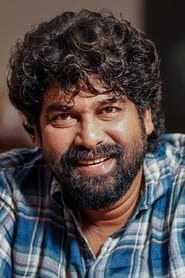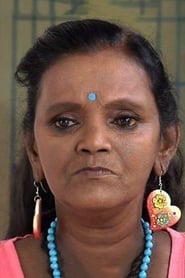
Ask Your Own Question
What is the plot?
What is the ending?
In the ending of "IDI: Inspector Dawood Ibrahim," Inspector Dawood Ibrahim confronts the main antagonist, a powerful criminal named Kader. After a series of intense confrontations, Dawood manages to outsmart Kader and his gang, leading to their arrest. The film concludes with Dawood being celebrated as a hero, having restored peace and order, while also reflecting on the personal sacrifices he made during his journey.
Now, let's delve into the ending in a more detailed narrative fashion.
As the climax of the film approaches, the tension escalates. Inspector Dawood Ibrahim, portrayed with a mix of determination and vulnerability, prepares for the final showdown against Kader and his criminal empire. The scene is set in an abandoned warehouse, dimly lit and filled with the echoes of past confrontations. Dawood, clad in his police uniform, stands resolute, his jaw clenched, eyes focused, embodying the weight of his responsibilities.
The atmosphere is thick with anticipation as Kader, a menacing figure with a cold demeanor, enters the scene surrounded by his henchmen. The camera captures the flicker of uncertainty in Dawood's eyes, revealing the internal conflict he faces--his duty as a police officer versus the personal vendetta against the man who has caused so much pain in his life. The stakes are high, and the air crackles with tension.
As the confrontation unfolds, a fierce exchange of words occurs. Kader taunts Dawood, reminding him of the losses he has suffered, while Dawood counters with a fierce resolve, declaring that justice will prevail. The dialogue is sharp, filled with emotional weight, as both men reveal their motivations--Kader driven by power and greed, and Dawood fueled by a desire for justice and redemption.
The action erupts as a fight breaks out. Dawood, using his training and quick thinking, engages in a brutal hand-to-hand combat sequence with Kader's henchmen. Each punch and kick is choreographed with precision, showcasing Dawood's skills and determination. The camera captures the sweat glistening on his brow, the grit in his expression, and the sheer willpower that drives him forward.
In a pivotal moment, Dawood faces Kader one-on-one. The fight is intense, filled with close-ups that highlight the raw emotions on their faces--fear, anger, and desperation. Dawood, despite being outnumbered, uses his environment to his advantage, ultimately gaining the upper hand. With a final, powerful blow, he subdues Kader, pinning him to the ground. The moment is charged with triumph and relief, as Dawood breathes heavily, the weight of the world momentarily lifted from his shoulders.
As the police arrive to apprehend Kader and his gang, the scene shifts to a celebratory atmosphere. Dawood stands amidst his colleagues, who applaud him for his bravery and dedication. The camera pans over the faces of his fellow officers, filled with admiration and respect. Dawood's expression softens, revealing a mix of pride and sorrow as he reflects on the sacrifices he made along the way--friends lost, relationships strained, and the toll of his relentless pursuit of justice.
In the final moments, Dawood is seen walking away from the scene, the sun setting in the background, casting a warm glow over the city. He pauses, looking back at the chaos he has helped to quell, a bittersweet smile forming on his lips. The film closes with a sense of hope, suggesting that while the battle against crime is ongoing, Dawood's commitment to justice remains unwavering.
The fates of the main characters are clear: Dawood emerges as a hero, having faced his demons and triumphed, while Kader is taken into custody, his reign of terror finally brought to an end. The film leaves the audience with a sense of closure, yet also an understanding of the ongoing struggle between good and evil, embodied in the journey of Inspector Dawood Ibrahim.
Is there a post-credit scene?
In the movie "IDI: Inspector Dawood Ibrahim," there is indeed a post-credit scene that adds a humorous twist to the film's conclusion. After the credits roll, the scene opens with Inspector Dawood Ibrahim, played by the charismatic actor Jayasurya, in a light-hearted moment. He is seen in a comical situation where he is trying to impress a group of people with his supposed detective skills.
As he attempts to showcase his prowess, he inadvertently finds himself in a series of slapstick mishaps, leading to laughter among the onlookers. The scene captures Dawood's overconfidence and his tendency to get into trouble, reinforcing his character's blend of charm and clumsiness. The light-heartedness of the post-credit scene serves to leave the audience with a smile, encapsulating the film's comedic essence while also hinting at the ongoing adventures of Inspector Dawood Ibrahim.
What motivates Inspector Dawood Ibrahim in his pursuit of justice throughout the film?
Inspector Dawood Ibrahim is driven by a deep sense of duty and a personal vendetta against crime. His past experiences, including the loss of loved ones to criminal activities, fuel his relentless pursuit of justice. He is portrayed as a dedicated officer who believes in upholding the law, often putting his life on the line to protect the innocent and bring criminals to justice.
How does the character of Dawood Ibrahim evolve throughout the film?
Throughout the film, Dawood Ibrahim evolves from a strict, by-the-book inspector to a more nuanced character who grapples with the moral complexities of his job. Initially, he is seen as uncompromising and rigid, but as he faces various challenges and confronts corrupt systems, he begins to question his methods and the effectiveness of the law. This internal conflict adds depth to his character, showcasing his growth and the toll that his profession takes on him.
What role does the antagonist play in the story, and how does their relationship with Dawood Ibrahim develop?
The antagonist in 'IDI: Inspector Dawood Ibrahim' is a cunning and ruthless criminal mastermind who poses a significant threat to society. Their relationship is marked by a cat-and-mouse dynamic, where the antagonist often outsmarts Dawood, leading to intense confrontations. As the story progresses, the antagonist's motivations are revealed, and their personal history with Dawood adds layers to their conflict, making it not just a battle of good versus evil, but a clash of ideologies and personal vendettas.
What are some key challenges that Inspector Dawood Ibrahim faces in his investigation?
Inspector Dawood Ibrahim faces numerous challenges throughout his investigation, including bureaucratic obstacles, corruption within the police force, and the cunning tactics of the criminal underworld. He often finds himself isolated, with few allies to support him, and must navigate dangerous situations that put his life at risk. These challenges test his resolve and force him to adapt his strategies, showcasing his resourcefulness and determination.
How does the film portray the theme of corruption within the police force?
The film portrays corruption within the police force as a pervasive issue that undermines justice. Several characters, including some of Dawood's colleagues, are depicted as being on the take, complicating his efforts to combat crime. This theme is illustrated through various plot points where Dawood must confront not only external threats but also betrayal from within his own ranks, highlighting the moral dilemmas faced by law enforcement officers in a corrupt system.
Is this family friendly?
"IDI: Inspector Dawood Ibrahim" is a Malayalam action-comedy film that contains several elements that may not be suitable for children or sensitive viewers. Here are some potentially objectionable aspects:
-
Violence: The film features action sequences that include fights and confrontations, which may depict physical harm and aggression.
-
Crime Themes: The storyline revolves around crime and law enforcement, which may include discussions or depictions of illegal activities.
-
Mature Humor: The film employs humor that may include innuendos or jokes that are more appropriate for an adult audience.
-
Language: There may be instances of strong language or slang that could be considered inappropriate for younger viewers.
-
Emotional Tension: Certain scenes may evoke feelings of fear or anxiety, particularly those involving confrontations with antagonists.
These elements may make the film less suitable for a family-friendly viewing experience, especially for younger children or those sensitive to such content.







































